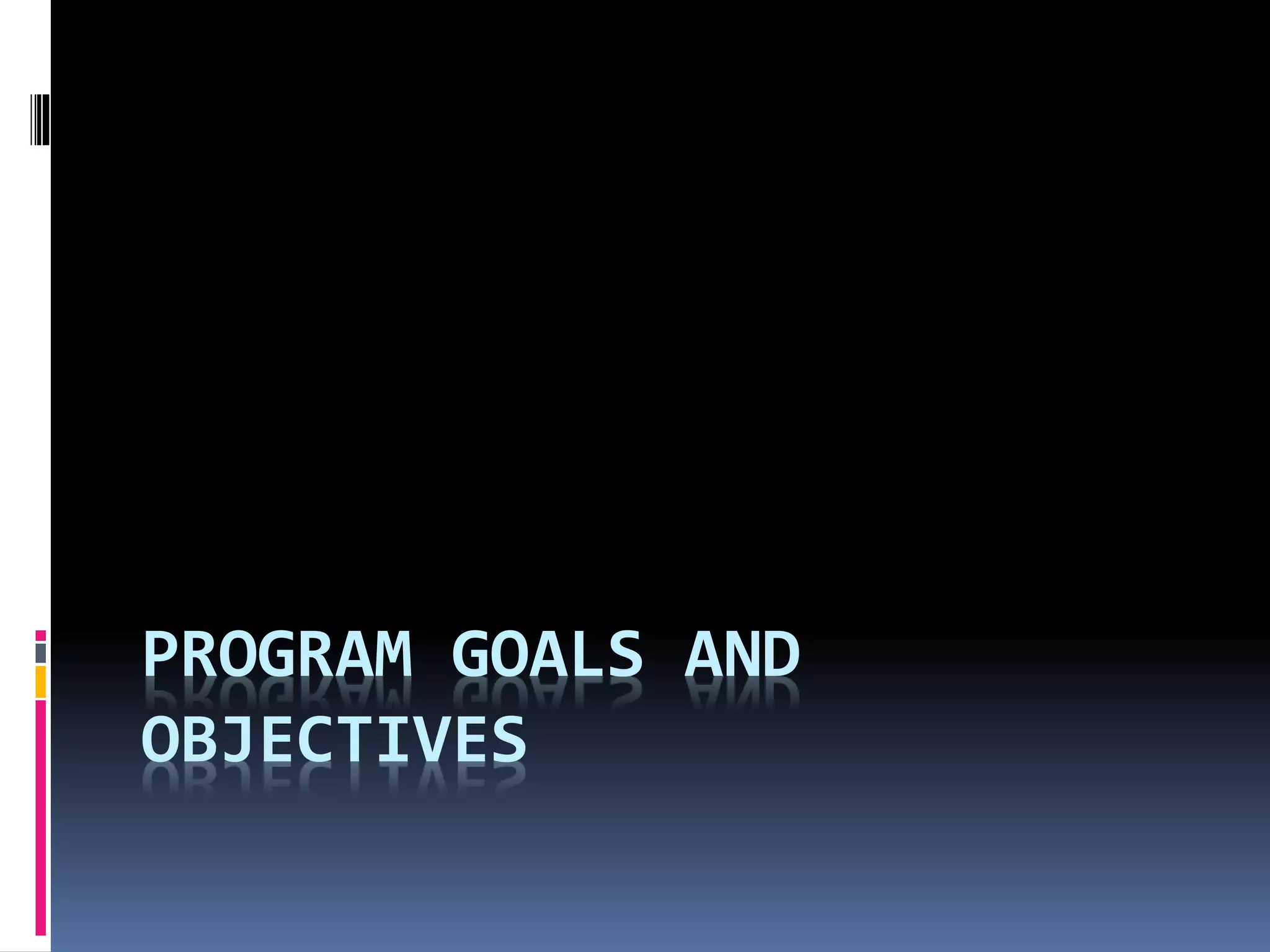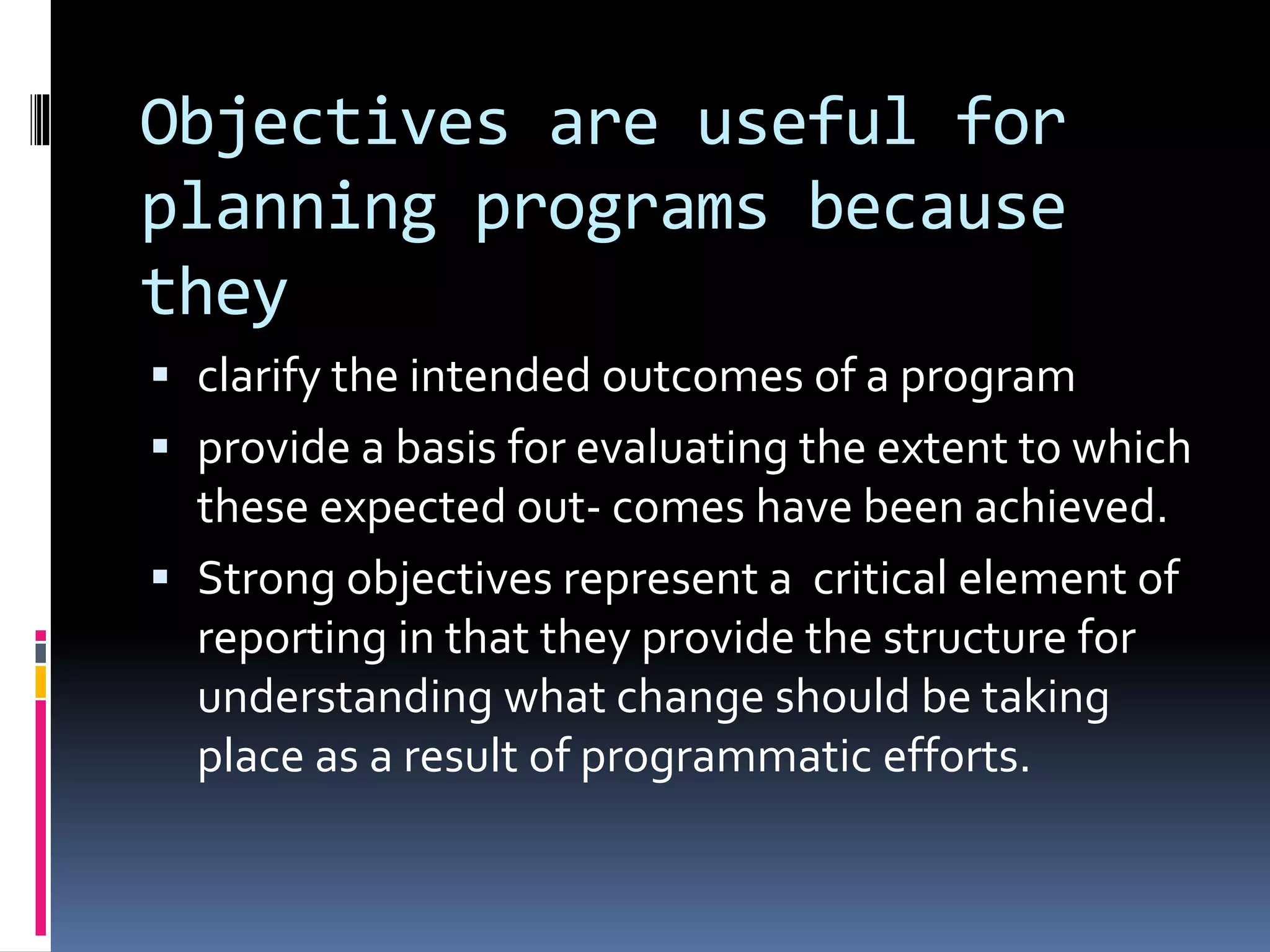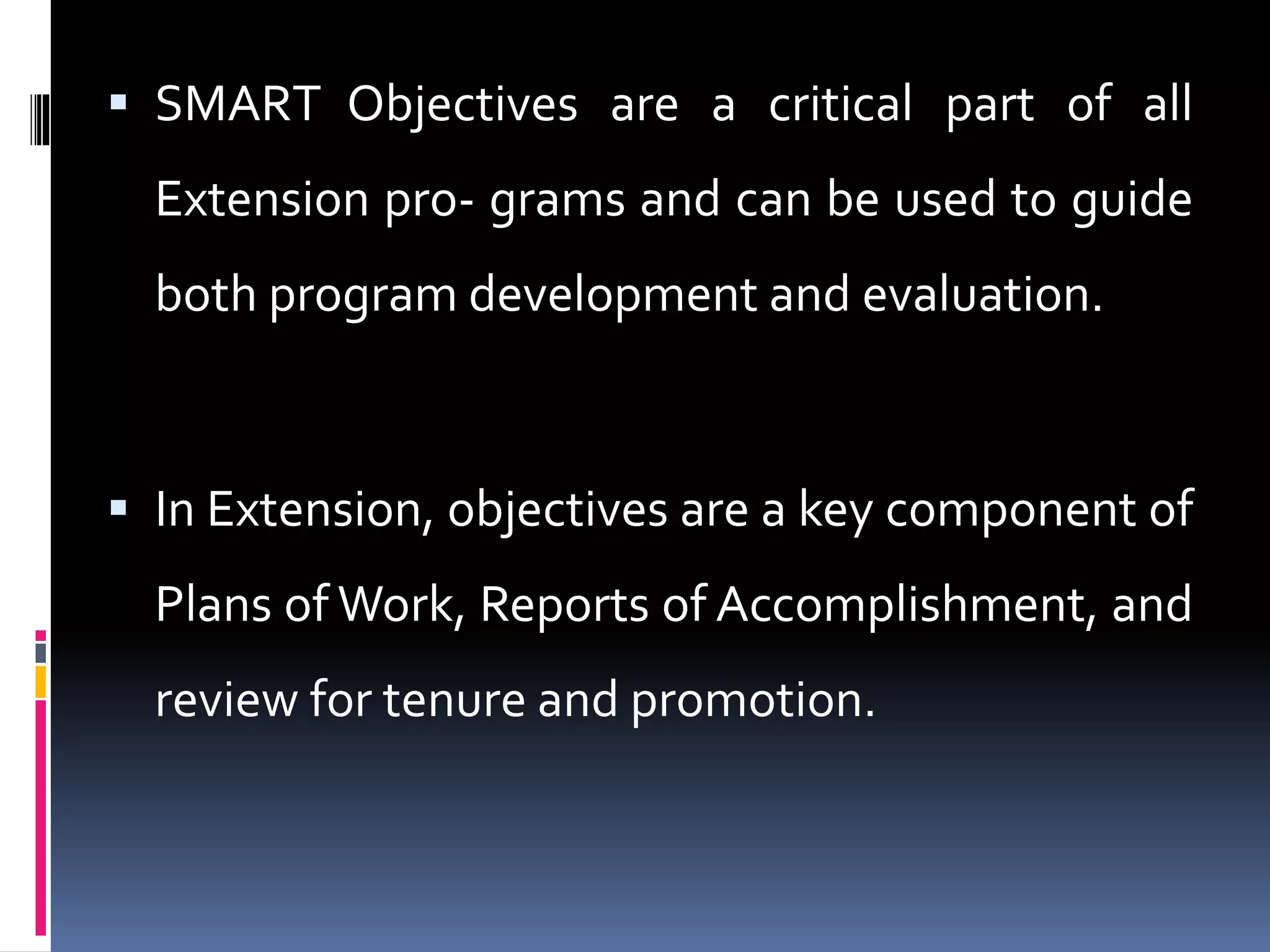This document discusses the importance of goals and objectives in Extension program development and evaluation. It defines goals as broad statements of end results and objectives as specific and measurable outcomes. Objectives should be SMART: specific, measurable, achievable, relevant and time-bound. A four step process is provided for writing SMART objectives that involves setting a time frame, target audience, desired change, and measurement approach. Examples of nutrition and fertilizer use objectives are also given. Overall, the document emphasizes that clear, measurable objectives guide effective programming and evaluation in Extension work.



























